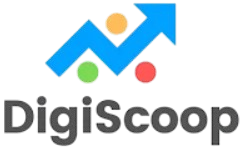In this exclusive interview, Anchal Siwag, Associate Director of Customer Success at Trackier and Apptrove, opens up about her fast-track journey from frontline onboarding to strategic leadership in SaaS. A fierce advocate for outcomes over outputs, Anchal shares how she’s redefining customer success as a revenue and relationship engine not a reactive support function. From navigating regional nuances across EMEA, APAC, and India, to embedding AI into retention playbooks and aligning tightly with product vision, her leadership reflects both precision and empathy. As CS evolves into a core business vertical, Anchal is already shaping what the future of customer success should feel like: data-driven, emotionally intelligent, and deeply embedded in product and growth strategy.
You’ve scaled from CSM to Associate Director in just a few years. What mindset or strategy helped you grow so fast within the SaaS ecosystem?
From coffee-fueled onboarding calls to boardroom-level strategies the leap wasn’t luck, it was layered. My growth came from obsessing over outcomes, not just outputs. I never treated Customer Success as a support function; to me, it was always the engine room of revenue, retention, and relationships. I asked better questions, stayed uncomfortably curious, and leaned into chaos. And somewhere between mapping client journeys and redefining internal playbooks, I earned my seat at the strategy table.
In your current leadership role, how do you align customer success with Trackier’s product vision, especially in a fast-evolving, bootstrapped SaaS like this?
Alignment isn’t a buzzword here, it’s survival! In a bootstrapped rocketship like Trackier, our product and CS teams are in a constant tango. I ensure customer voices echo into our roadmap and that our roadmap doesn’t echo back as complexity. Every touchpoint we own feeds into adoption, every ticket closed fuels feedback, and every QBR/EBR is a mini product workshop in disguise. I don’t just align with product vision; instead, I ensure my team lives it with context, conviction, and customer empathy.
Having worked across EMEA, APAC, and India, how do customer expectations differ across regions? How do you adapt success metrics accordingly?
If Customer Success had a passport, it would be full of stamps. What works in India’s volume game may fall flat in APAC’s nuance or EMEA’s precision. I’ve learned to localise success without diluting its essence, adapting SLAs to different time zones, engagement strategies to local cultures, and product language to market maturity. Our metrics flex with the region – from NRR to product adoption timelines, but our mission stays intact: empower, engage, elevate.
“Product wins deals. CS keeps promises. I lead where both collide.”
How is AI shaping customer success workflows at Trackier, from retention strategies to product adoption?
We’ve gone from spreadsheets to smart suggestions. AI now helps my team do what humans do best, “be human”. From predictive churn scoring and intent mapping to personalized adoption nudges, AI turns our data into direction. But here’s the real deal: I don’t see AI replacing CS. I see it replacing repetitive noise so my team can focus on resonance, the meaningful, contextual, and timely touchpoints that drive loyalty. We use AI, but we lead with EQ.
Trackier emphasizes unified mobile marketing. How are your teams helping clients handle fragmented user journeys across platforms and geos?
Mobile may be the world’s common language, but user behaviour? That’s a global dialect fest. Our role is to decode it. Whether it’s a brand in Dubai scaling across SEA or an Indian fintech expanding to multiple platforms, we build clarity into complexity. With Apptrove now in our arsenal, we’re stitching fragmented journeys into seamless narratives, powered by accurate attribution and actionable insights. My team? We’re not just customer success managers – we’re conversion cartographers.
With deep experience across customer success and marketing tech, do you see yourself leaning more into product strategy or operational leadership in the long run?
Truth be told, I’ve got one foot in both camps already. CS gave me the empathy, marketing tech gave me the foresight, and now product strategy feels like a natural extension. But I believe the most powerful leaders are operational visionaries – those who don’t just dream in slides, but execute in dashboards. Pursuing my Executive MBA from IIM Kozhikode has further equipped me to connect business outcomes with operational depth. So yes, the future may see me bridging that gap, leading from both data and the gut, with people and products in equal focus.
What’s one major shift you foresee in the SaaS–CSM space in the next 5 years and how are you preparing for it?
CS will evolve from being a post-sale function to a full-blown business vertical. Expect to see CSMs driving product feedback loops, owning revenue motions, and co-authoring GTM plans. The north star will shift from retention to relationship economics. I’m already prepping my team for this, starting with timely Recurring Business reviews that go beyond graphs to client councils, advocacy programs, and AI-led health scoring. The shift is coming, and we’re not waiting – we’re building.


